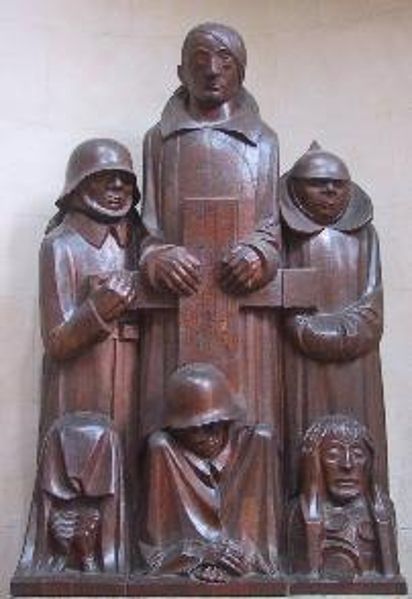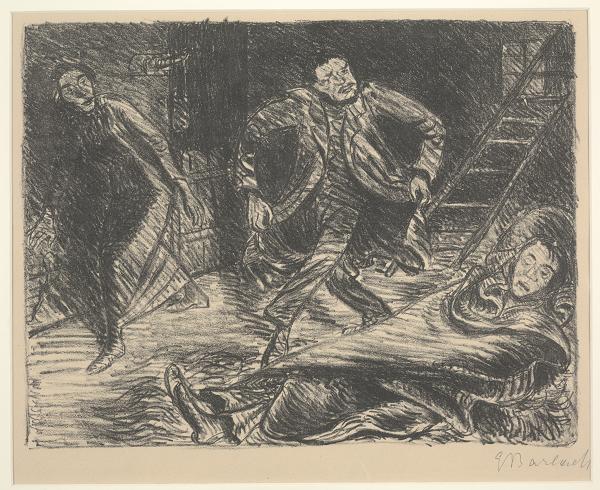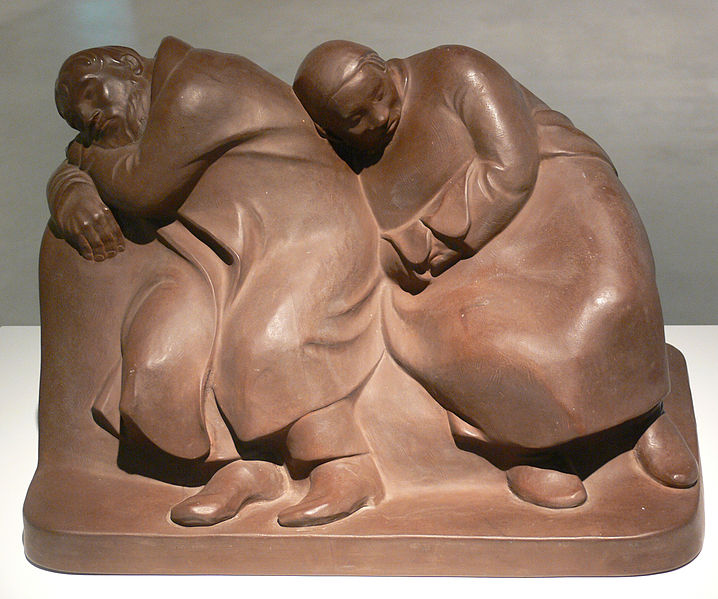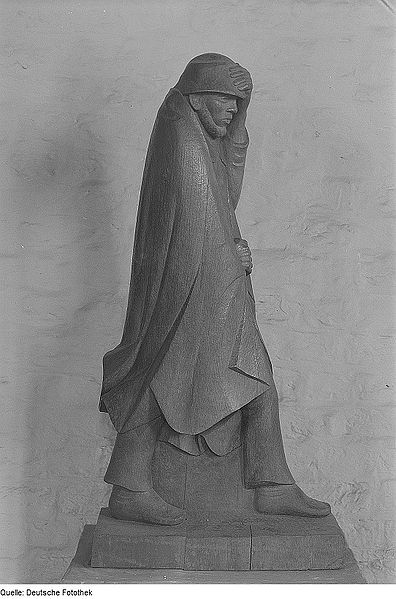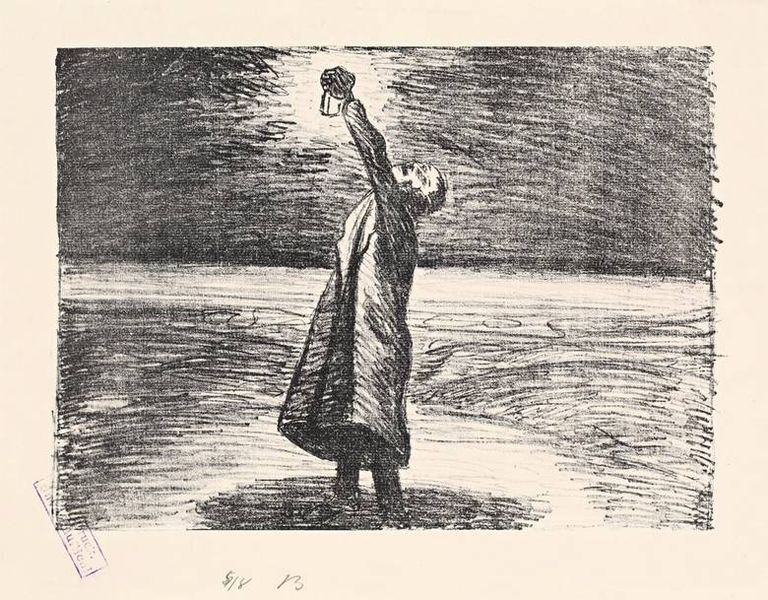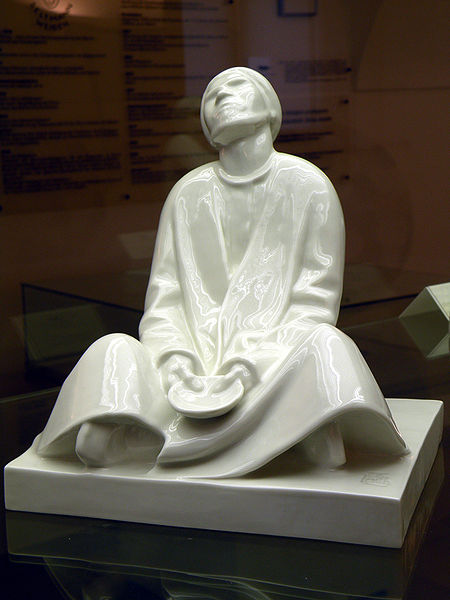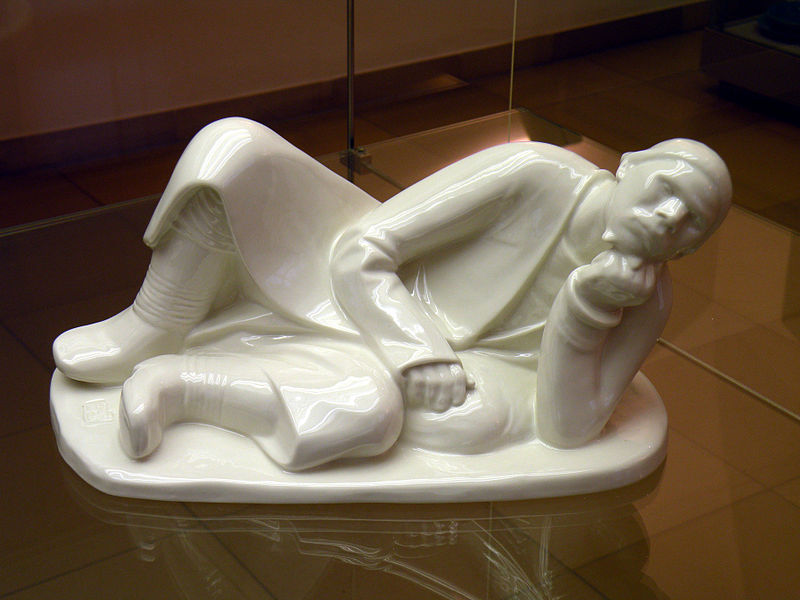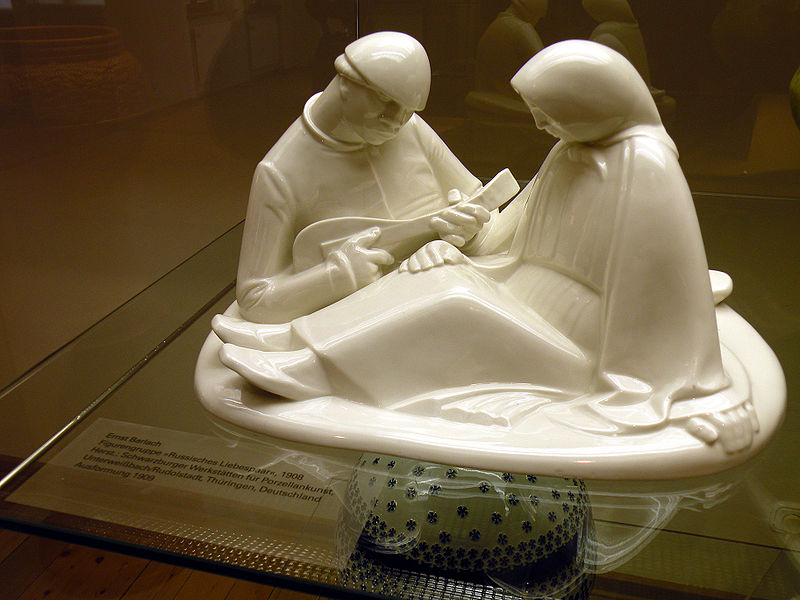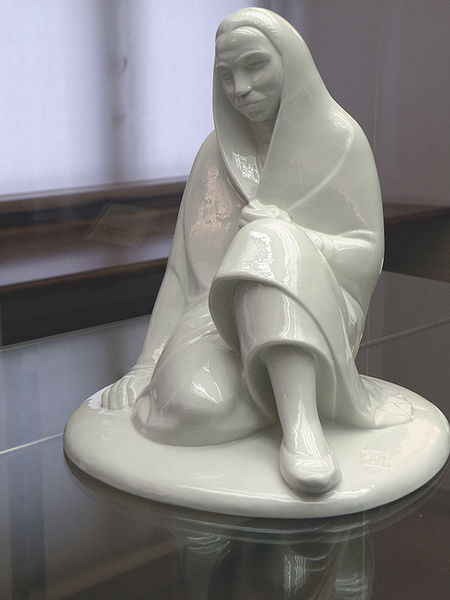<Back to Index>
- Writer, Journalist and Publisher Georg Hirth, 1841
- Sculptor, Printmaker and Writer Ernst Barlach, 1870
PAGE SPONSOR
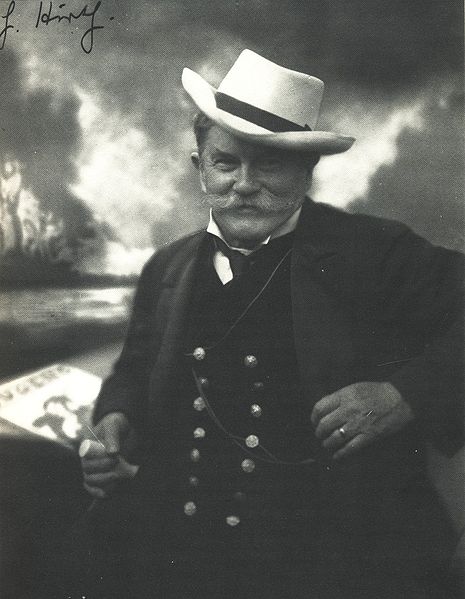
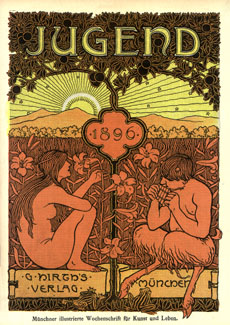
Georg Hirth (13 July 1841 – 1916) was a German writer, journalist and publisher. He is best known for founding the cultural magazine Jugend in 1896, which was instrumental in popularizing Art Nouveau.
Hirth was born in Tonna, Thuringia, in 1841, studied to be an economist in Gotha and in Leipzig, and after a career working as a journalist he founded the magazine Jugend: Münchner illustrierte Wochenschrift für Kunst und Leben (English: Youth: the illustrated weekly magazine of art and lifestyle of Munich). This publication, which reflected the modernist ideals that were circulating at the time among artists, was instrumental in promoting the style of Art Nouveau in Germany. As a result, the magazine's name was adopted as the most common German language term for the movement: Jugendstil ("Jugend style"). Hirth also coined the term "Secession" to represent the spirit of the various modern and reactionary movements of the era. He died in Munich in 1916.
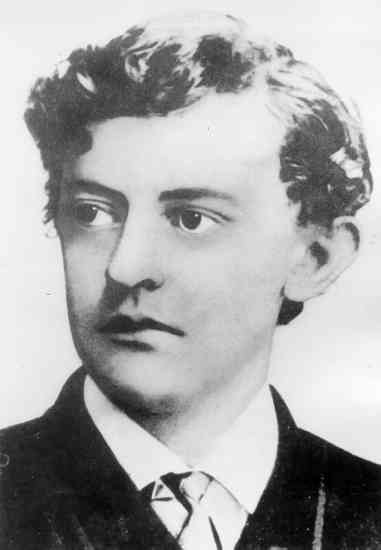
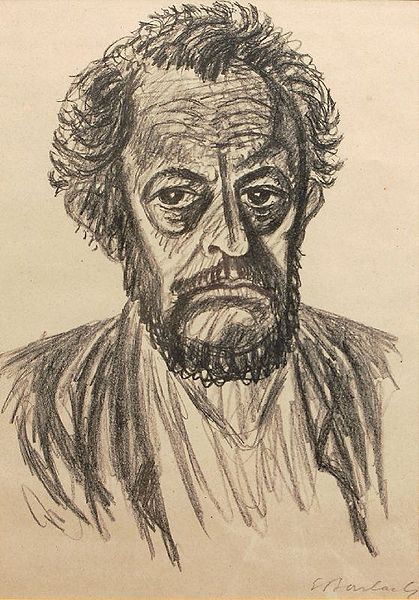
Ernst Barlach (2 January 1870 – 24 October 1938) was a German expressionist sculptor, printmaker and writer. Although he was a supporter of the war in the years leading to World War I, his participation in the war made him change his position, and he is mostly known for his sculptures protesting against the war. This created many conflicts during the rise of the Nazi Party, when most of his works were confiscated as degenerate art.
Barlach was born in Wedel, Holstein, as the oldest of the four sons of Johanna Luise Barlach and Dr Georg Barlach. He attended primary school in Ratzeburg. It was during this period that his father died, early in 1884.
Barlach studied from 1888 to 1891 at the Gewerbeschule Hamburg. Due to his artistic talent, he continued his studies at the Königliche Akademie der bildenden Künste zu Dresden (Royal Art School Dresden) as a student of Robert Diez between 1891 and 1895. He created his first major sculpture during this time, Die Krautpflückerin (The Herb Plucker). He continued his studies for one more year in Paris at the Académie Julian, but remained critical of the German tendency to copy the style of French artists. Nevertheless he returned to Paris again for a few months in 1897 to undertake further studies.
After his studies, Barlach worked for some time as a sculptor in Hamburg and Altona, working mainly in an Art Nouveau style. He produced illustrations for the Art Nouveau magazine Jugend 1897 - 1902, and made sculpture in a style close to Art Nouveau, including some ceramic statues. Afterwards, he also worked as a teacher at a school for ceramics. His first solo exhibition took place at the Kunstsalon Richard Mutz, Berlin, in 1904.
However, the lack of commercial success of his works depressed Barlach. To lighten up, he decided to travel for eight weeks together with his brother Nikolaus and to visit his brother Hans in Russia. This trip to Russia in 1906 was one of the greatest influences on him and his artistic style. Also during his travels in Russia his son Nikolaus was born on August 20, 1906, starting a two year fight with the mother, Rosa Schwab, for the custody of the child, which Barlach was finally granted.
After returning from Russia, Barlach's financial situation improved considerably, as he received a fixed salary from the art dealer Paul Cassirer in exchange for his sculptures. The formative experiences in Russia and the financial security helped him to develop his own style, focusing on the faces and hands of the people in his sculptures and reducing the other parts of the figures to a minimum. He also began to make wood carvings and bronzes of figures swathed in heavy drapery like those in early Gothic art, and in dramatic attitudes expressive of powerful emotions and a yearning for spiritual ecstasy. He also worked for the German journal Simplicissimus, and started to produce some literature. His works were shown on various exhibitions. He also spent ten months in Florence, Italy, in 1909 and afterwards settled in 1910 in Güstrow in Mecklenburg, where he spent the rest of his life.
In the years before World War I, Barlach was a patriotic and enthusiastic supporter of the war, awaiting a new artistic age from the war. This support for the war can also be seen in his works, as for example the statue Der Rächer (The Avenger), from December 1914. His awaited new artistic age came for him when he volunteered to join the war between 1915 and 1916 as an infantry soldier. After three months of service he was discharged due to a heart ailment, returning as a pacifist and a staunch opponent of war. The horror of the war influenced all of his subsequent works.
Barlach's fame increased after the war, and he received many awards and became a member in the prestigious Preußische Akademie der Künste (Prussian Art Academy) in 1919 and the Akademie der Bildenden Künste München (Munich Art Academy) in 1925. Barlach rejected a number of honorary degrees and teaching positions. In 1925 he also met Bernhard and Marga Böhmer for the first time. He received the Kleist Prize for drama in 1924 for his Die Sündflut (The Flood), in which he projects his personal mysticism onto the story of Noah and the Ark. In 1926 he wrote Der blaue Boll (translated as Squire Blue Boll or Boozer Boll), an expressionist drama in which the eponymous squire almost succeeds in seducing a down - and - out young mother, before both achieve spiritual regeneration.
From 1928 onward Barlach also generated many anti - war sculptures based on his experiences in the war. This pacifist position went against the political trend during the rise of Nazism, and he was the target of much criticism. For example, the Magdeburger Ehrenmal (Magdeburg cenotaph) was ordered by the city of Magdeburg to be a memorial of World War I, and it was expected to show heroic German soldiers fighting for their glorious country. Barlach, however, created a sculpture with three German soldiers, a fresh recruit, a young officer and an old reservist, standing in a cemetery, all bearing marks of the horror, pain and desperation of the war, flanked by a mourning war widow covering her face in despair, a skeleton wearing a German army helmet, and a civilian (the face is that of Barlach himself) with his eyes closed and blocking his ears in terror. This naturally created a controversy with the pro - war population (several nationalists and Nazis claimed that the soldiers must be foreign since true Germans would be more heroic), and the sculpture was removed. Friends of Barlach were able to hide the sculpture until after the war, when it was returned to the Magdeburg Cathedral. Yet the attacks on Barlach continued until his death.
In 1931 Barlach started to live with Marga Böhmer, whereas her ex-husband and Barlach's friend Bernhard Böhmer lived with his new wife Hella.
In 1936, Barlach's works were confiscated during an exhibition together with the works of Käthe Kollwitz and Wilhelm Lehmbruck, and the majority of his remaining works were confiscated as "degenerate art", for example the Güstrower Ehrenmal (Güstrow cenotaph) and the Hamburger Ehrenmal (Hamburg cenotaph). Barlach himself was prohibited from working as a sculptor, and his membership in the art academies was canceled. This rejection is reflected in his final works before his death from heart failure on 24 October 1938 in Rostock, Mecklenburg. He is buried in the cemetery of Ratzeburg.
In addition to his sculpture, Barlach also wrote eight Expressionist dramas, two novels and an autobiography Ein selbsterzähltes Leben 1928, and had a distinguished oeuvre of woodcuts and lithographs from about 1910 onwards, including illustrations for his own plays.
